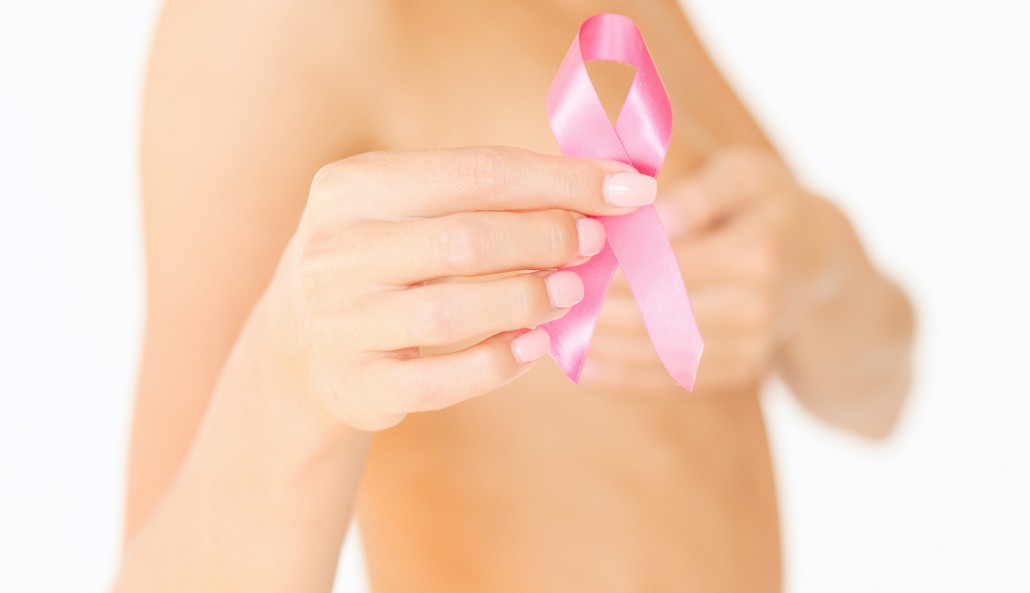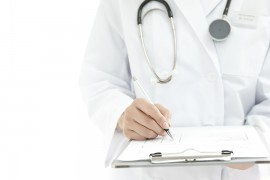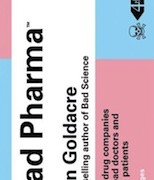
Thomas Lodi, M.D. outlines the shocking truth about mammograms.
Pink ribbons, fundraising hikes, runs and walks, as well as TV and magazine ads, seem to culturally define the month of October to Americans with as much significance as apple pie, turkeys and pilgrims define November.
Our October heritage, though, has very shallow roots going back in time only to 1985, with the express purpose of raising both our awareness and research monies for breast cancer.
What is manifestly and patently absent from Breast Cancer Awareness Month is the role that our continually expanding toxic environment (plastics and other oestrogen mimickers, pesticides, herbicides and fungicides in addition to the long list of numerous carcinogenic compounds now routinely released into our environment) plays in the development of breast, as well as other, cancers.
Only about 3% of the more than 75,000 chemicals in regular use today have actually been tested for in terms of their overall safety and carcinogenicity.
Furthermore, since it is a well established fact that living close to toxic waste disposal areas increases the incidence of breast cancer more than six-fold, as does having well manicured and “pest free” lawns, it is unfathomable that this data does not constitute the main topic of discussion and serve to target dollars into researching prevention.
Fifty years ago, an American woman’s risk of developing breast cancer was one in twenty, whereas she now has an almost one in seven risk, and also a much higher likelihood of contracting it earlier in life.
Mammograms have become so prevalent that to the average American they are synonymous with breast cancer screening.
And when a physician orders a breast ultrasound as an initial, harmless screening tool, he/she receives a call from the radiologist explaining that an ultrasound cannot be performed until the results of a breast mammogram have been obtained.
Although mammography can and does detect some early malignancies, most of these are well known not to be lethal.
Mammograms were deceptively pushed onto an unsuspecting public in the 1970s, with neither professional oversight nor sustained objections from the American Cancer Society (ACS) or the National Cancer Institute (NCI).
This happened in spite of the fact that in 1974, professor Malcolm Pike of the University of Southern California, School of Medicine told the NCI that “giving a woman under age 50 a mammogram on a routine basis is close to unethical”.
Moreover, in 1978, Irwin J.S. Bross., Director of Biostatistics at Rosewell Park Memorial Institute for Cancer Research stated, “The women should have been given the information about the hazards of radiation […] The exposure of a quarter of a million persons to something which could do more harm than good was criminal and it was supported by money from the federal government and the American Cancer Society”.
Throughout the 1990s and up to the present time, many authorities have come out publicly to explicitly present these mind-boggling facts to the public at large, including Dr. I. Craig Henderson, director of the Clinical Cancer Center at the University of California in San Francisco; Dr. Robert McLelland, a radiologist at the University of North Carolina School of Medicine; Burton Goldberg, Terry A Rondberg, DC, Ralph Moss, PhD, Gary Null, PhD. Leading medical journals, including The Lancet, have also printed exposes.
In 1999, the entire scam in all of its horrid detail was published in the Journal of Alternative Medicine but, unfortunately, there are not many people who even know that this journal existed.
One of the only causes of cancer officially acknowledged by the American Cancer Society is radiation, and this esteemed organisation quite explicitly states that there is no safe level of exposure.
Yet the ACS not only targets women aged 40 and over for routine mammography, but even suggests that women as young as 25 years of age now begin routine screening under certain circumstances.
Moreover, there has been a dramatic increase (328%) in a type of breast cancer called ductal carcinoma in situ since mammography became the principal mode of screening, with 200% of this increase allegedly resulting directly from the use of mammograms.
In fact, evidence has been released by the National Cancer Institute suggesting that mammography will cause 75 cases of breast cancer for every 15 that it diagnoses!
We have to scratch our heads in absolute horror and shock when we consider that there exists a debate regarding whether or not to utilise a technology that is known to cause cancer, in order to diagnose cancer.
This is all the more poignant when one considers that a recent Canadian study found the mortality rate from breast cancer in younger women was 52% greater for those who underwent annual mammographic screening.
As if all of that were not enough, the accuracy of mammography is completely unacceptable, with false positive reporting as high as 20%, especially in premenopausal women.
To be clear, a false positive means that a woman is told she has cancer when, in fact, she doesn’t.
Although there is some evidence that early detection may improve survival in post-menopausal women (under 69 years, though) “no such benefit is demonstrable for younger women,” says Samuel Epstein, M.D., professor emeritus of environmental medicine at the University of Illinois School of Public Health.
And, as Dr. Charles Simone (former clinical associate of the National Cancer Institute) summarises, “mammograms increase the risk for developing breast cancer and raise the risk of spreading or metastasising an existing growth”.
This last statement is obvious to anyone who has seen or experienced a mammogram. Sensitive breast tissue is painfully squashed (traumatised) and then irradiated!
Since it is fairly routine to obtain a breast ultrasound in order to corroborate the findings of a mammogram, why not use this safe diagnostic screening tool (ultrasound) routinely instead of one that produces the very disease that it is being used to identify?
There is really no mystery regarding the causes of the US’s breast cancer epidemic – nor, for that matter, of the worldwide pandemic.
Toxins, toxins, toxins….in our food, water, air, clothing, homes, workplaces, automobiles and public areas.
In most consumer products, toxic additives outweigh the active ingredients.
A woman can dramatically diminish her own personal risk of contracting breast or any other cancer by simply eating and drinking non-toxic substances in their original and whole form, and avoiding toxins in cosmetics, hygiene products, clothing, household products and all other areas of life.
Also, it is necessary to avoid or resolve toxic relationships, learn to sleep appropriately for our species, learn how to mitigate the effects of stress through meditation, laugh with friends and, of course, enjoy regular exercise.
Oh, and did I mention? Avoid mammograms!
Thomas Lodi, M.D., is a leading expert in the field of integrative oncology. Dr Lodi has dedicated his career to the research and application of comprehensive cancer care by identifying and addressing the root causes of cancer. He is founder and chief physician at An Oasis of Healing, his integrative cancer clinic in Mesa, Arizona.
For further information, visit the website or call (001) 480-834-5414.
In the first video below, Dr Lodi talks about the holistic healing of cancer; in the second we hear from Inga, who healed her breast cancer at his clinic.




